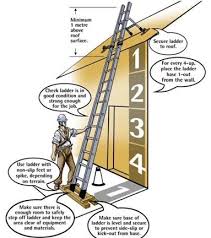|
Colour
|
Meaning or Purpose
|
Instruction and Information
|
|
Red
|
Prohibition sign
Danger alarm
|
Dangerous behaviour; stop; shutdown; emergency cut out; evacuation
|
|
Yellow Amber
|
Warning sign
|
Be careful; take precautions; examine
|
|
Blue
|
Mandatory sign
|
Specific behaviour or action e.g wear PPE
|
|
Green
|
Emergency escape
First aid sign
No danger
|
Doors; exits; escape routes; equipment and facilities
Return
|
Prohibition Signs.
Signs that indicate that an action or activity is not permitted. Prohibition signs indicate an action or behavior that is not permitted. The sign is shown as a Red Circle with a red slash over a black icon of the action. Text is black on a white background.
Mandatory Signs.
Signs that indicate that an instruction must be carried out. Mandatory signs provide specific instructions that MUST be carried out. The icons are in white reversed out of a blue circle. Text is black on a white background.
Danger Signs.
Signs warning of a particular hazard or hazardous condition that is likely to be life-threatening. Danger signs communicate a hazard, condition or situation that is likely to be life threatening. The sign is shown as the word Danger on a red oval over a black rectangle. Text is black on a white background.
Warning Signs.
Safety Signs warning of a hazard or hazardous condition that is not likely to be life-threatening. Warning signs warn of hazards or conditions that are not likely life threatening. These Safety Signs consist of a black triangle and icon on a yellow background with supporting black text if required.
Fire Safety Signs.
Fire safety signs advise the location of fire alarms and firefighting equipment. They contain white symbols and/or text on a red background.
Emergency Signs.
Emergency signs indicate the location of, or directions to emergency facilities (Exits, First Aid, Safety Equipment etc.) These signs feature a white symbol and/or text on a green background.
General Information Signs.
These signs are not referred to in AS 1319:1994 however are available due to popular demand (Notice Signs, Parking Signs etc.) They communicate information of a general nature and often refer to housekeeping, company practices or logistics.












